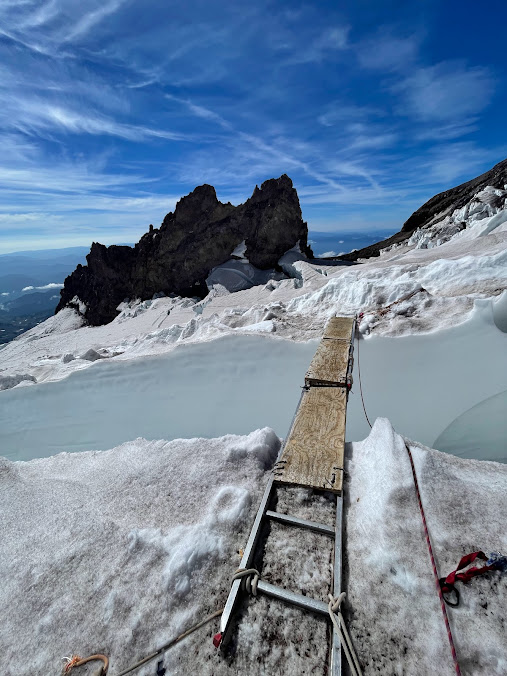Where did the summer go? With the return of fall, operations and services at Mount Rainier will begin to decrease. Climbing and Wilderness Permits are still required through the fall and winter for traveling on Mount Rainier above 10,000 feet or on glaciers. Self-registration for climbers in Paradise begins Monday September 11th, 2023 as the Paradise Wilderness Information Center will close September 10th. There will be a self-registration box located outside the Old Ranger Station in Paradise. As winter approaches a large tunnel will be put in front of the door. Walk through this tunnel and find the self-registration box with instructions at the end of the walkway. This is open 24/7 for registration, even if no one is staffing it.
 |
| Self Registration is at the Paradise Ranger Station near the center of the photo. Climbers can still register in-person (which we recommend) in Longmire and White River. Check the park's operating hours and pay special attention to the date at which the operating hours change as we move into winter. The White River Wilderness Information Center will be staffed until October 9th, 2023. After that date, there will be a self-registration box on the outside of the Wilderness Information Center as well until the road closes for the season. The Longmire Wilderness Information Center will also close around then and move their operations to the Longmire Museum for the winter. There are two things required to climb in the off-season. The first is to pay the online Annual Climber Cost Recovery Fee. The second is to use the self-registration stations at Paradise or White River to fill out your permit. Filling out your self-registration permit completely will help any necessary search and rescue efforts - please take the time to get it right! The full list of instructions will be located at both self-registration stations. You will fill out a sheet (front and back) at the ranger station and leave it in the drop box, you don't carry the permit on you. Please remember when you get off the mountain to fill out the return slip at the station and put in the drop box as well to check out from the field. As summer turns to winter, our seasonal staff starts to migrate away from the mountain. High camps will only be staffed very occasionally, search and rescue operations will be delayed, and the park's exclusive use helicopter will be departing the park by late September. Please keep in mind that during the winters, there aren't rangers actively staffing the high camps to talk about conditions or weather. It is recommended that climbers are prepared to be very self-sufficient as any rescue efforts could take days! |













































